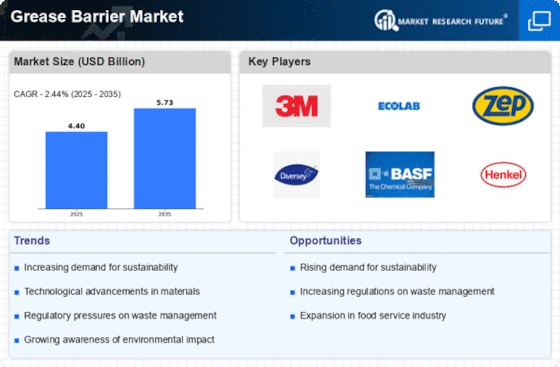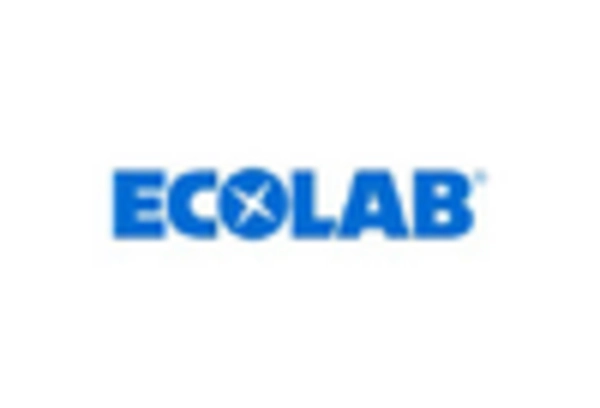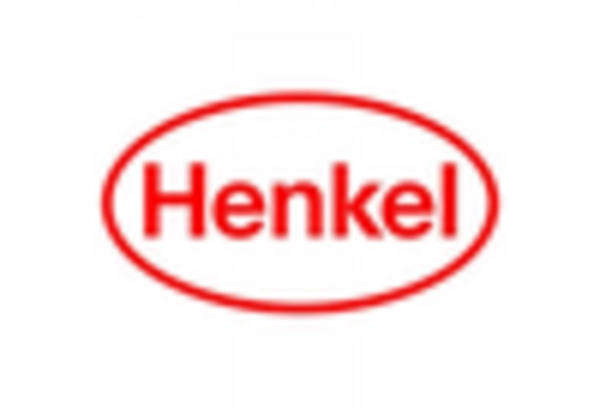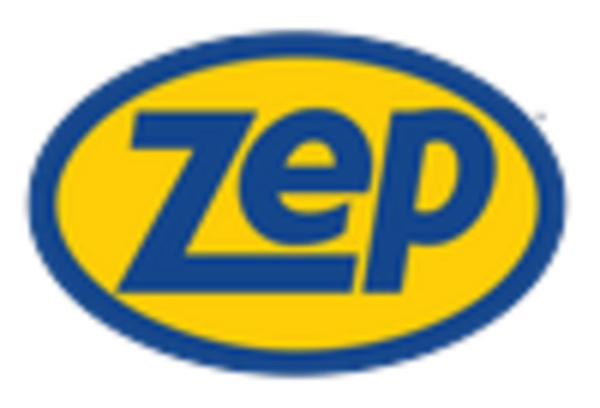Rising Demand for Food Safety
The increasing emphasis on food safety and hygiene standards is a primary driver for the Grease Barrier Market. As consumers become more health-conscious, regulatory bodies are enforcing stricter guidelines for food preparation and storage. This trend is particularly evident in the food service sector, where grease barriers are essential for preventing contamination. The market for grease barriers is projected to grow as restaurants and food manufacturers invest in compliance with these regulations. In 2025, the food service industry is expected to reach a valuation of over 800 billion, further propelling the demand for effective grease management solutions. Consequently, the Grease Barrier Market is likely to experience significant growth as businesses prioritize safety and quality in their operations.
Environmental Regulations and Compliance
Stringent environmental regulations are driving the Grease Barrier Market as governments worldwide impose stricter guidelines on waste management. These regulations aim to minimize the environmental impact of grease and oil discharges into water systems. Industries such as food processing, automotive, and manufacturing are particularly affected, as they must adhere to these compliance standards. The market for grease barriers is expected to expand as companies invest in solutions that meet regulatory requirements. In 2025, the total expenditure on environmental compliance is projected to exceed 300 billion, indicating a robust market opportunity for grease barrier manufacturers. This regulatory landscape is likely to propel the Grease Barrier Market forward.
Urbanization and Infrastructure Development
The rapid pace of urbanization is significantly influencing the Grease Barrier Market. As cities expand and infrastructure projects increase, the demand for effective grease management solutions in urban settings is on the rise. New residential and commercial developments require compliance with environmental regulations, which often mandate the installation of grease barriers to prevent pollution. In 2025, urban areas are expected to account for over 55% of the global population, leading to heightened scrutiny on waste management practices. This trend suggests that the Grease Barrier Market will benefit from increased investments in urban infrastructure, as municipalities and developers seek to implement sustainable solutions.
Technological Innovations in Grease Management
Technological advancements are reshaping the Grease Barrier Market, leading to the development of more efficient and effective grease management systems. Innovations such as automated grease interceptors and advanced filtration systems are gaining traction among commercial kitchens and food processing facilities. These technologies not only enhance the performance of grease barriers but also reduce maintenance costs and improve overall efficiency. The integration of IoT devices for monitoring grease levels in real-time is also emerging, allowing for proactive management and timely interventions. As these technologies become more accessible, the Grease Barrier Market is poised for expansion, with a projected growth rate of approximately 6% annually over the next five years.
Increased Awareness of Environmental Sustainability
Growing awareness of environmental sustainability is emerging as a crucial driver for the Grease Barrier Market. Consumers and businesses alike are increasingly prioritizing eco-friendly practices, leading to a demand for sustainable grease management solutions. This shift is prompting manufacturers to develop biodegradable and recyclable grease barriers, aligning with the broader trend of reducing environmental footprints. In 2025, the market for sustainable products is anticipated to reach 1 trillion, reflecting a significant opportunity for the Grease Barrier Market to innovate and cater to environmentally conscious consumers. As sustainability becomes a core value for many organizations, the demand for effective grease barriers that support these initiatives is likely to rise.

















Leave a Comment